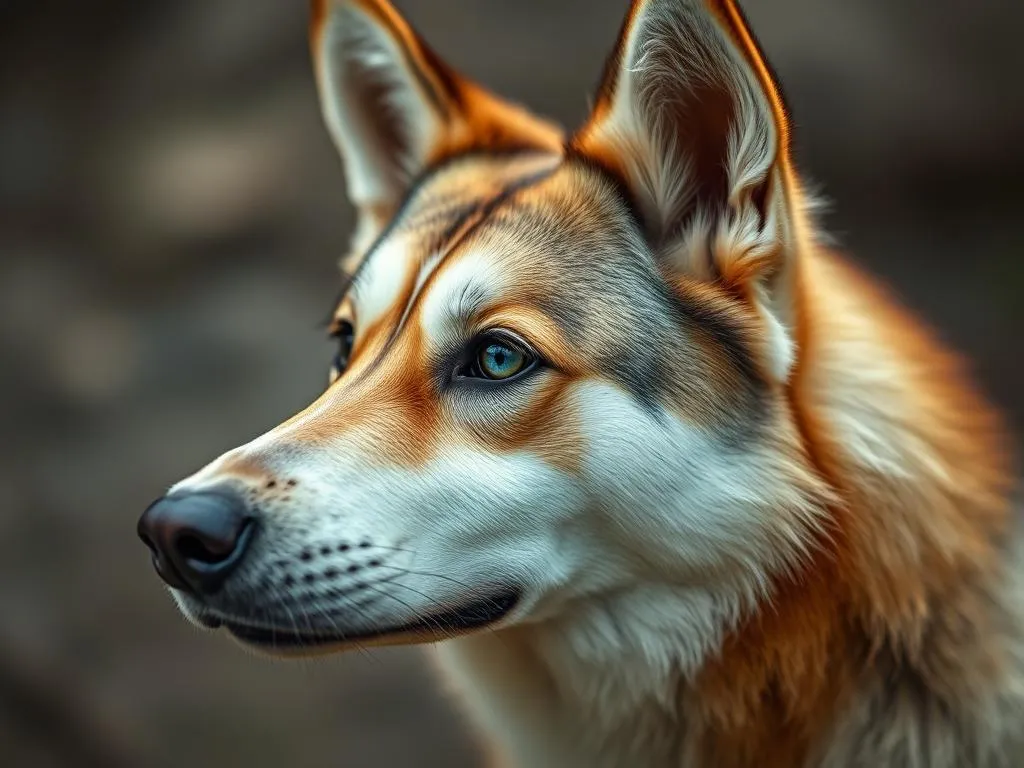
Laika, the first dog in space, holds a significant place in the annals of history. As a pioneer of space exploration, her tale is intertwined with the broader narrative of the Cold War and the Space Race, showcasing both the advancements and ethical dilemmas of her time. In this exploration of what kind of dog was Laika, we will delve into her background, the breed that made her uniquely suited for her mission, and the lasting legacy she left behind.
Background of Laika
Who Was Laika?
Laika was a stray dog found on the streets of Moscow, a mixed breed that was later identified as a combination of a Siberian Husky and a Terrier. Before her historic journey, Laika lived a life full of hardship, scavenging for food and dodging the dangers of the urban environment. In 1957, Soviet scientists adopted her, recognizing her potential for the ambitious project they were undertaking.
Laika’s training was rigorous and tailored for the demands of space. She underwent a series of tests and acclimatization exercises to prepare her for the unique conditions she would face. Despite her humble beginnings, Laika became a symbol of human ingenuity and the spirit of exploration.
Historical Context
To understand the significance of Laika’s journey, one must consider the historical backdrop of the Cold War and the Space Race. The competition between the United States and the Soviet Union to dominate space exploration was at its peak during the late 1950s. In this context, launching Laika into orbit served as a demonstration of technological prowess and national pride.
The decision to send Laika into space was not made lightly. The Soviet Union aimed to gather data on the effects of space travel on a living organism, paving the way for future human missions. Laika’s mission objectives were clear: to assess the viability of space travel for life and to solidify the Soviet Union’s standing in the Space Race.
Breed and Characteristics of Laika
What Breed Was Laika?
Laika’s breed, primarily a mix of Siberian Husky and Terrier, played a crucial role in her suitability for the mission. The Siberian Husky is known for its endurance, intelligence, and friendly disposition, while Terriers are often characterized by their tenacity and spirited nature. This combination made Laika not only resilient but also adaptable, traits that were essential for the challenges she would face in space.
Traits and Temperament
The behavioral traits of Laika’s breed contributed significantly to her ability to cope with the stresses of space travel. Siberian Huskies are known for their sociable and friendly demeanor, which likely helped Laika adjust to the new environment during her training. Terriers, on the other hand, are energetic and curious, traits that may have kept Laika engaged and alert during her journey.
Compared to typical dogs of her breed, Laika exhibited a unique temperament shaped by her experiences. While Siberian Huskies can be independent, Laika’s training fostered a sense of cooperation with her human handlers, a crucial aspect for any animal being prepared for such an unprecedented mission.
Physical Characteristics
Laika’s physical traits were also important for the mission. She was a small dog, weighing about 6 kilograms (13 pounds), which made her an ideal candidate for the cramped conditions of the spacecraft. Her fur was thick and well-suited to withstand the cold temperatures of space, and her compact size allowed for easier accommodation within the confines of Sputnik 2.
In terms of color, Laika was predominantly gray with white markings, features that are common in both Siberian Huskies and Terriers. This combination of size and fur made her not only a suitable choice for the mission but also a cute and relatable figure to the public.
Laika’s Mission: Sputnik 2
Overview of Sputnik 2
Laika’s journey began on November 3, 1957, when she was launched aboard Sputnik 2, the second spacecraft to be sent into orbit. This mission was a significant milestone in space exploration, following the successful launch of Sputnik 1 just a month earlier. The goals of Sputnik 2 were ambitious: to gather data on the physiological effects of space travel on living organisms and to demonstrate the Soviet Union’s capabilities in space technology.
The spacecraft itself was a cylindrical capsule equipped with life-support systems that would keep Laika alive during her journey. With Laika on board, Sputnik 2 was launched into space, marking a historic moment in both animal and human exploration.
Training and Preparation
Preparing Laika for her mission involved extensive training and acclimatization. Soviet scientists subjected her to various conditions that she would encounter in space, including isolation and confinement. They monitored her health closely, ensuring she was physically fit and mentally prepared for the task ahead.
Laika underwent training in a simulated environment that mimicked the conditions of space travel, including exposure to high levels of noise and vibration. The preparation was vital to ensure that Laika could handle the stresses of her launch and the subsequent time in orbit.
The Journey into Space
When Laika was finally launched into space, she became an instant symbol of space exploration. The launch itself was a momentous occasion, watched by millions around the world. Inside Sputnik 2, Laika experienced rapid acceleration, which would have been overwhelming for any living creature.
The conditions within the spacecraft were far from ideal. Laika faced extreme temperatures and limited space, which challenged her resilience. Despite these harsh realities, she exhibited remarkable adaptability during the flight. The mission lasted for several days, with Laika transmitting valuable data about her physiological state back to Earth.
Legacy of Laika
Impact on Space Exploration
Laika’s mission had a profound impact on the future of space exploration. Her flight provided crucial insights into how living organisms react to space conditions, paving the way for human missions. The data collected helped scientists understand the physiological challenges that would need to be addressed for future astronauts, contributing to the eventual success of human spaceflight.
Laika’s journey also highlighted the need for ethical considerations in scientific research. While her mission was a landmark achievement, it raised important questions about the treatment of animals in the pursuit of knowledge.
Ethical Considerations
The ethical implications of using animals in scientific research, particularly in high-stakes environments like space, have been debated since Laika’s mission. Critics argue that the decision to send a dog into space, knowing the potential risks, was inhumane. Supporters, however, contend that Laika’s sacrifice contributed invaluable data that ultimately advanced human understanding.
Laika’s legacy has prompted ongoing discussions about animal rights and ethics in research. As society becomes more aware of these issues, the conversation around the use of animals in science continues to evolve, influenced largely by Laika’s story.
Memorials and Tributes
In recognition of her contributions, Laika has been commemorated in various ways. Statues and memorials dedicated to her can be found in different parts of the world, celebrating her role as a pioneer of space exploration.
Cultural references to Laika appear in literature, art, and even music, ensuring that her story resonates with future generations. These tributes serve to honor her memory and remind us of the complex relationship between humans and the animals we involve in our scientific endeavors.
Conclusion
Laika’s journey into space remains a poignant chapter in the history of exploration. As the first living creature to orbit the Earth, she symbolizes the triumphs and tribulations of scientific progress. Understanding what kind of dog was Laika helps us appreciate the unique characteristics that allowed her to undertake such a monumental mission.
Laika’s legacy is a reminder of the lessons we have learned from her journey. It fosters reflection on the ethical considerations surrounding the use of animals in research and the importance of humane treatment in the pursuit of knowledge. As we look to the future of space exploration, Laika’s spirit continues to inspire, urging us to balance our quest for discovery with compassion and respect for all living beings.









